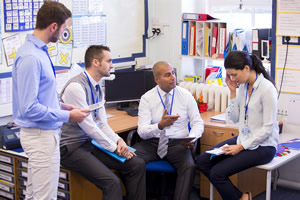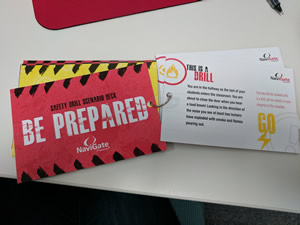School Drills: A Dual Purpose Exercise
 There is a reason we refer to firefighters, police and emergency medical personnel as first responders. They are all trained to assess a situation and respond accordingly. Their ability to respond comes from knowledge, practice and honing skills pertaining to a myriad of emergency scenarios. We rely on these people to stay calm, take charge and above all, be prepared for anything.
There is a reason we refer to firefighters, police and emergency medical personnel as first responders. They are all trained to assess a situation and respond accordingly. Their ability to respond comes from knowledge, practice and honing skills pertaining to a myriad of emergency scenarios. We rely on these people to stay calm, take charge and above all, be prepared for anything.
According to Thom Jones, general manager at NaviGate Prepared and former middle school principal, “Today, educators also must be prepared for anything. You must learn and practice skills so when a situation occurs – a bomb threat, an angry parent, a suicidal student or staff member, a fire, and so on – you are prepared to respond according to the plan and procedures established in your school district. This is why drills are so important.” Drills serve two key purposes.
The first is to assess the fidelity of your safety plan. Drills help you determine whether the procedures in your safety plan will work in an actual emergency. It could be something as simple as vocabulary. One district in Arizona learned their high school used different terms for drills than their middle school. Incoming freshmen were confused and unsure how to respond.
 Similarly, an evacuation route may look good on paper, but when students and staff traverse the route, they may find it doesn’t accommodate a growing student population.
Similarly, an evacuation route may look good on paper, but when students and staff traverse the route, they may find it doesn’t accommodate a growing student population.
The second purpose of drills is to allow staff and students to practice emergency procedures. “The challenge here is to keep everyone engaged in the exercise rather than simply going through the motions,” say Jones. One way to accomplish this is by having staff initiate the drill. The likelihood of the principal encountering a fire in the bathroom or a medical emergency in a classroom is slim. Having staff pull the fire alarm, call 9-1-1, and alert the building is an effective way to get them engaged in the drill and, more importantly, prepared to respond.
Drill scenarios offer another way to enhance the effectiveness of drills. Providing a staff member with a scenario such as, “There are smoke and flames coming from the ceiling tiles in your classroom. What would you do?” puts the drill in context and gives staff a very real situation to respond to.
Click here to access audio drill scenarios and other tools to enhance safety drills.
Jones sums it up, “The ability to remain calm and respond effectively in an emergency makes all the difference—and that can only come from knowledge, practice and preparation.”
Sponsored by: NaviGate Prepared